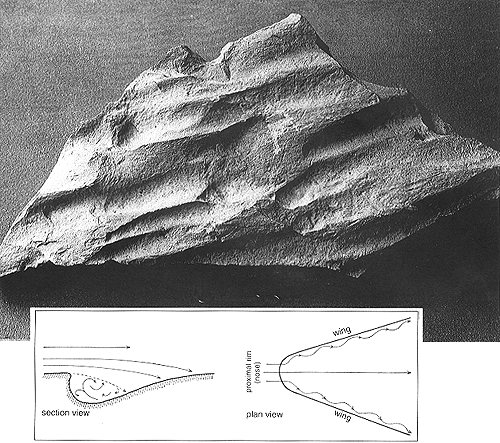
Erosional marks on pelite: flutes
Plate 87

Erosional marks on pelite: flutes
Plate 87
These flute-shaped furrows are parallel to the flow, with an upcurrent (proximal) nose and a distal open, transitional end. They are usually found as casts on the sole of sandstone beds, as the underlying mudstone is more easily weathered. The specimen of fresh mudstone photographed here is rather special, and was collected in a quarry after mine blasting.
Marnoso-arenacea Formation, northern Apennines.
Flute marks can occur isolated, but are more commonly clustered or cover the whole bed surface, as the following pictures show. The scouring agent is a turbulent current (the marks are frequent at the base of graded beds), with local eddies focusing their energy on or behind small irregularities of the bottom (see inset). In other words, flute marks should be a variety of obstacle scours, even though no fixed objects are associated with them. On a deep-water bottom, one cannot expect pebbles or stones, i.e., the type of roughness that can rather characterize river beds. Local asperities on a mud bed can be provided by the fill of animal burrows (see plates 151, 156), and local zones of stiffened mud.
| Photo: G. Piacentini 1970. |